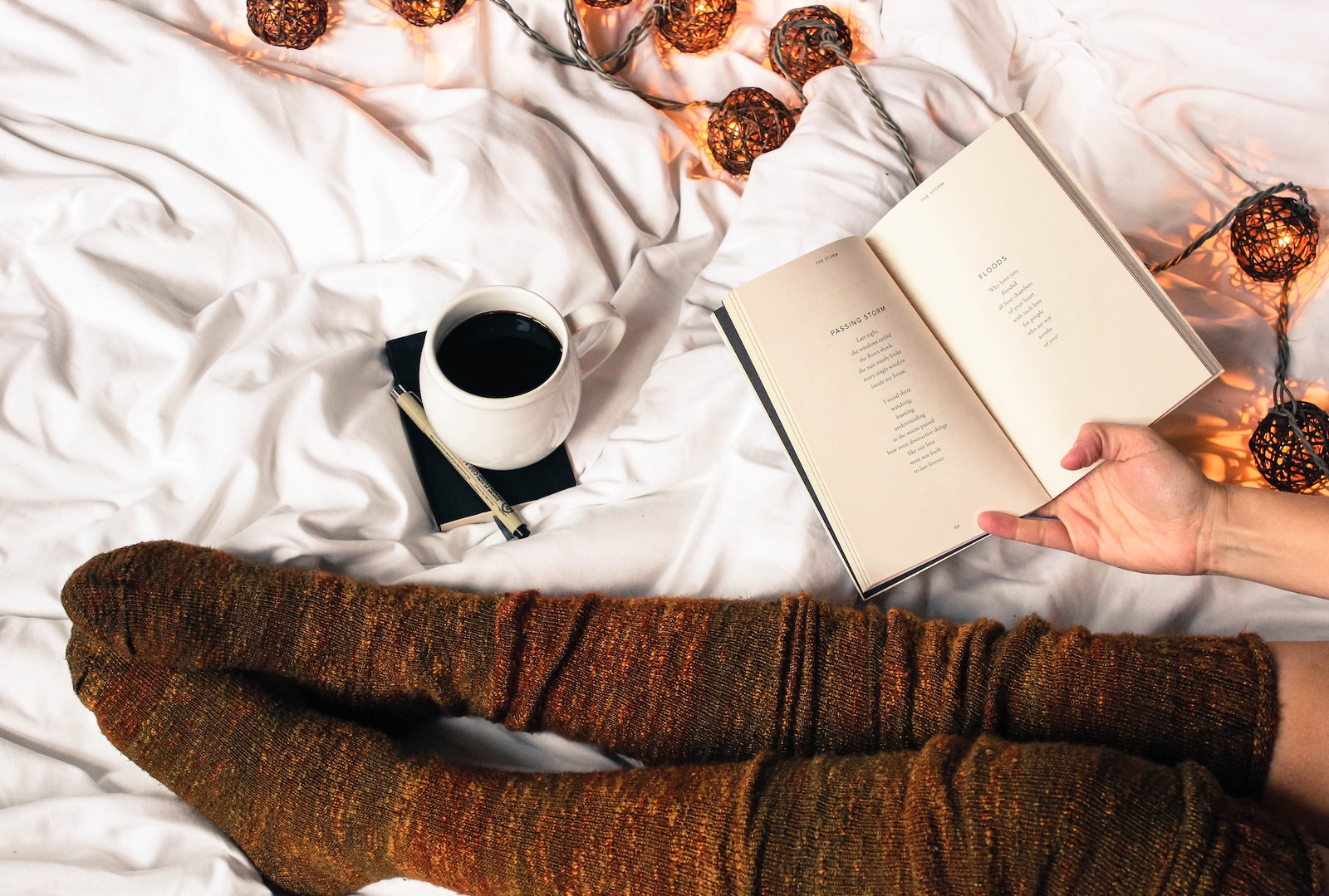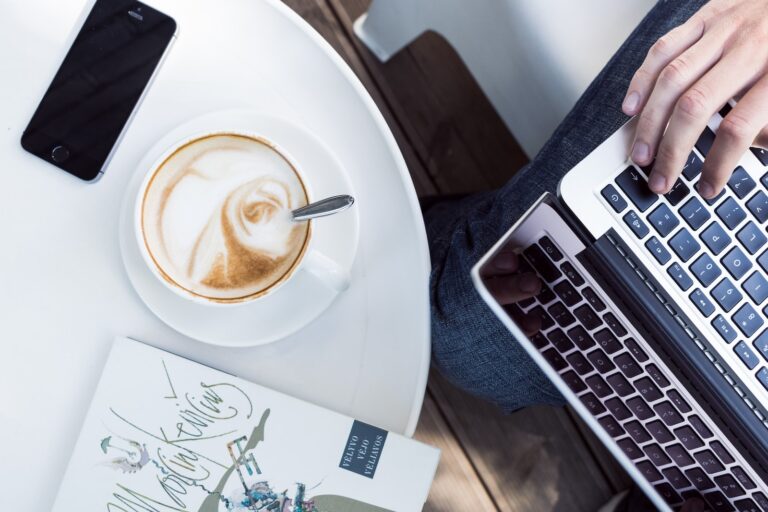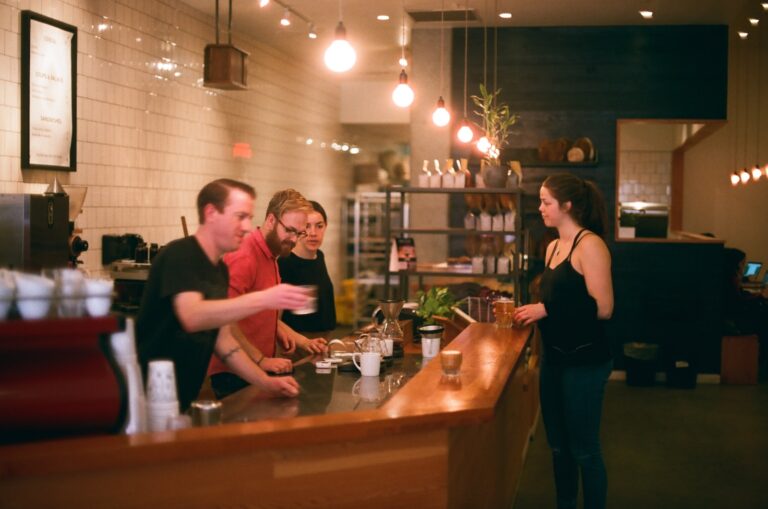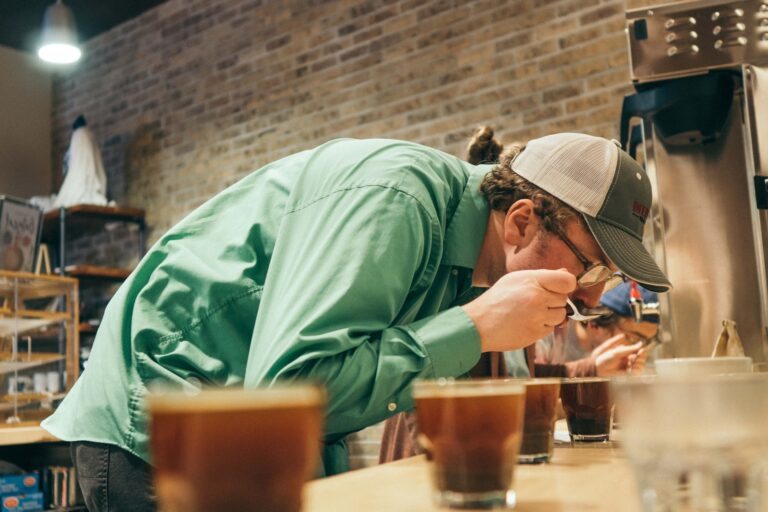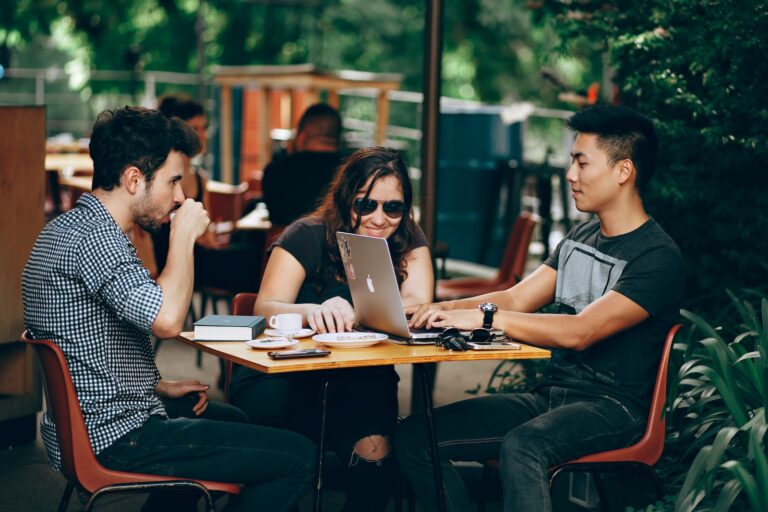Step into any bustling coffee shop and you’ll likely see a sea of laptops, notebooks, and sketchpads scattered among the steaming cups. It’s no secret that coffee fuels our creativity, igniting sparks of inspiration with each sip. But have you ever stopped to ponder just how intertwined this beloved beverage is with art and music?
From renowned painters who relied on its invigorating properties to avant-garde musicians who found rhythm in its aroma, “Sipping Creativity: Coffee’s Role in Art and Music” delves into the symbiotic relationship between caffeine-infused beverages and the world of artistic brilliance. So grab your favorite brew as we explore how coffee has fueled masterpieces throughout history – one aromatic cup at a time!
Introduction to the connection between coffee and creativity

Coffee has become deeply ingrained in our daily routines, whether it’s that first cup to wake us up in the morning or a mid-afternoon pick-me-up. But have you ever stopped to think about how this delicious beverage could be more than just a source of caffeine? As it turns out, coffee has been linked to creativity for centuries and has played a significant role in shaping art and music.
The connection between coffee and creativity can be traced back to the 16th century when coffeehouses emerged as popular meeting places for writers, artists, and musicians. These establishments were known as hubs for intellectual discussions, debates, and collaborations. The stimulating effects of caffeine allowed individuals to engage in lively conversations and share their ideas freely, leading to innovative thinking and artistic expression.
In addition to providing a space for creative minds to gather, coffee itself is believed to enhance cognitive function and spark inspiration. Caffeine is considered a psychostimulant and is known for increasing alertness, focus, and energy levels. It also boosts dopamine production in the brain which can lead to feelings of pleasure, motivation, and happiness – all crucial components of the creative process.
Moreover, studies have shown that consuming moderate amounts of caffeine (around 200mg) can improve divergent thinking – the ability to come up with multiple solutions or ideas from one prompt. This type of thinking is essential in artistic endeavors as it allows individuals to think outside the box and explore different perspectives.
History of coffee as a creative stimulant
The history of coffee as a creative stimulant is a long and fascinating one, with its roots tracing back to the ancient cultures of Africa and the Middle East. It wasn’t until the 15th century that coffee began to spread throughout Europe and eventually became popularized as a beverage and trade commodity.
In many cultures, drinking coffee has been associated with intellectual and creative pursuits. The stimulating effects of caffeine on the brain have been known for centuries, making it an ideal companion for those seeking inspiration or looking to enhance their mental focus.
Coffee’s role as a creative stimulant can be seen in various artistic forms such as literature, music, and visual art. In fact, some of history’s greatest artists were known to be avid coffee drinkers, using it to fuel their creativity and produce their masterpieces.
During the Enlightenment period in Europe, coffeehouses became popular hubs for intellectuals, writers, philosophers, and artists to gather and exchange ideas. These gatherings often led to stimulating discussions that were fueled by copious amounts of coffee. Many famous literary works such as Voltaire’s “Candide” and Balzac’s “The Black Sheep” were written in these bustling cafes.
Famous artists and musicians who credit coffee for their inspiration
Coffee has been an integral part of many artists’ and musicians’ creative process for centuries, with its strong aroma and stimulating properties providing the necessary jolt for their creativity to flow. From famous painters to iconic rock stars, coffee has played a significant role in inspiring their masterpieces. In this section, we will take a closer look at some of the most famous artists and musicians who credit coffee for their inspiration.
1] Vincent Van Gogh
The legendary Dutch painter, Vincent Van Gogh was known to be a heavy coffee drinker. His letters and journals often mentioned his love for the beverage, stating that it helped him focus and “paint without clogging [his] brain.” He would often drink several cups of strong black coffee while working on his iconic paintings such as “Starry Night” and “Sunflowers.” Some even say that the swirls and bold strokes in his paintings were influenced by the swirling steam rising from his cup of coffee.
2] Ludwig van Beethoven
One of the greatest composers in history, Ludwig van Beethoven also turned to coffee for inspiration during long hours of composing music. It is said that he was very particular about his coffee’s taste and preparation method. He would count exactly 60 beans per cup before grinding them, believing it produced the perfect balance of caffeine to fuel his creativity.
3] Edvard Munch
Norwegian painter Edvard Munch is best known for his iconic painting “The Scream,” which captures an intense level of emotion and anxiety. Munch was said to be a heavy coffee drinker, consuming up to 30 cups a day. He even had his own special blend of coffee, which he called “Munch’s Cup,” made with dark-roasted beans from Java.
4] Bob Dylan
Legendary singer-songwriter Bob Dylan has been known for his love of coffee throughout his career. In an interview with Rolling Stone magazine, he revealed that his daily routine includes a cup of coffee before breakfast and another one after lunch. He also admitted to having a strong addiction to caffeine, saying that he couldn’t imagine writing or performing without it.
5] Jean-Léon Gérôme
French painter and sculptor Jean-Léon Gérôme is renowned for his detailed and realistic depictions of historical events and landscapes. He was also a huge fan of coffee and was often seen drinking it while working in his studio. It is rumored that he would mix it with milk and cognac for an extra boost of inspiration.
Coffee shop culture as a hub for creativity
The coffee shop has long been known as a place where people can gather, socialize, and relax while enjoying a warm cup of coffee. However, in recent years, coffee shops have also emerged as a hub for creativity – a space where artists and musicians find inspiration and fuel their creative processes.
Coffee shop culture has become intertwined with the world of art and music, creating a unique atmosphere that encourages creative thinking and expression. From the cozy interiors to the aroma of freshly brewed coffee beans, everything about these establishments exudes creativity.
One key aspect of coffee shop culture that fosters creativity is its welcoming and inclusive nature. Unlike traditional art galleries or concert halls, which can feel intimidating or exclusive, coffee shops are open to all. Anyone can walk in off the street, sit down with a cup of coffee, and soak in the artistic ambience. This accessibility creates an environment that is conducive to collaboration and idea-sharing among artists and musicians from all walks of life.
Moreover, many coffee shops have embraced the trend of displaying local artwork on their walls. This not only supports local artists but also adds to the overall artistic vibe of the space. It provides patrons with something interesting to look at while they enjoy their drink – whether it’s paintings, photographs, or sculptures.
Coffee-inspired art and music
Coffee has long been a source of inspiration for artists and musicians alike. Its rich aroma, deep flavor, and energizing effect have stirred the imagination of creative minds throughout history. From paintings and sculptures to music compositions and performances, coffee has played a significant role in the creation of some of the world’s most notable works of art.
One cannot talk about coffee-inspired art without mentioning the iconic paintings by Dutch artist Vincent Van Gogh. Known for his bold use of colors and textured brushstrokes, Van Gogh’s “The Night Café” (1888) is a prime example of how coffee can influence an artist’s work. The painting depicts a lively café scene with patrons enjoying their drinks, while the warm hues and swirling patterns in the background evoke the feeling of being immersed in coffee’s stimulating ambiance.
Similarly, renowned Spanish painter Pablo Picasso was also known to find inspiration in coffee. According to his close friend and biographer Françoise Gilot, Picasso would often sketch on napkins at his favorite cafe while sipping on espresso. In fact, one of his most famous works, “Guernica” (1937), was reportedly sketched out on a napkin during one such visit to a cafeteria.
The role of caffeine in productivity for creative individuals
Caffeine is a stimulant that is commonly found in coffee, tea, and energy drinks. It is known for its ability to increase alertness, boost energy levels, and improve focus. These effects can be especially beneficial for creative individuals who rely on their creativity to produce innovative ideas and works of art.
One of the main ways caffeine helps with productivity for creative individuals is by increasing mental clarity and alertness. Many artists and musicians often struggle with distractions or a lack of focus, which can hinder their productivity. Caffeine acts as a central nervous system stimulant, meaning it can help combat fatigue and keep the mind sharp.
Moreover, caffeine has been shown to enhance cognitive flexibility, which is crucial for creative thinking. This refers to the brain’s ability to switch between different tasks or approaches quickly. For artists and musicians who need to constantly think outside the box and come up with new ideas, this type of mental agility can be incredibly beneficial.
In addition to improving focus and cognitive function, caffeine also has an impact on mood regulation. Creative individuals may experience periods of self-doubt or feel stuck in a rut when trying to create something new. Caffeine has been found to increase feelings of happiness and motivation while reducing feelings of anxiety or depression – all factors that contribute positively to overall productivity.
Alternative drinks for non-coffee drinkers
For those who aren’t particularly fond of coffee, there are still plenty of alternative drinks to enjoy while indulging in the creative world of art and music. While coffee may be commonly associated with creativity and inspiration, it’s important to remember that everyone has different tastes and preferences when it comes to beverages.
One popular drink among non-coffee drinkers is tea. With its extensive variety of flavors such as black, green, herbal, and fruity, tea provides a wide range of options for people to choose from. Whether you prefer a warm cup of traditional breakfast tea or a refreshing iced fruit tea on a hot summer day, there’s no shortage of ways to enjoy this beverage. In fact, many artists and musicians swear by the calming effects of tea on their minds and bodies while creating their masterpieces.
If you’re looking for something more unique and unconventional, kombucha may be just the drink for you. This fermented beverage is made from sweetened black or green tea mixed with yeast and bacteria cultures. It has gained popularity in recent years due to its numerous health benefits and tangy flavor profiles. Not only does kombucha offer a different taste experience than coffee, but it also gives you an energy boost without the caffeine crash.
Conclusion
The role of coffee in art and music is undeniable, from fueling late-night creative sessions to providing a cozy atmosphere for inspiration. As we have explored in this article, the traditions and rituals surrounding coffee have become intertwined with many artists’ processes, making it more than just a beverage.
Coffee’s rich history and cultural significance continue to influence and inspire creatives around the world, solidifying its place as an essential element in the world of art and music. So next time you take a sip of your favorite brew, remember that you are not just drinking a cup of coffee but sipping on creativity itself.

